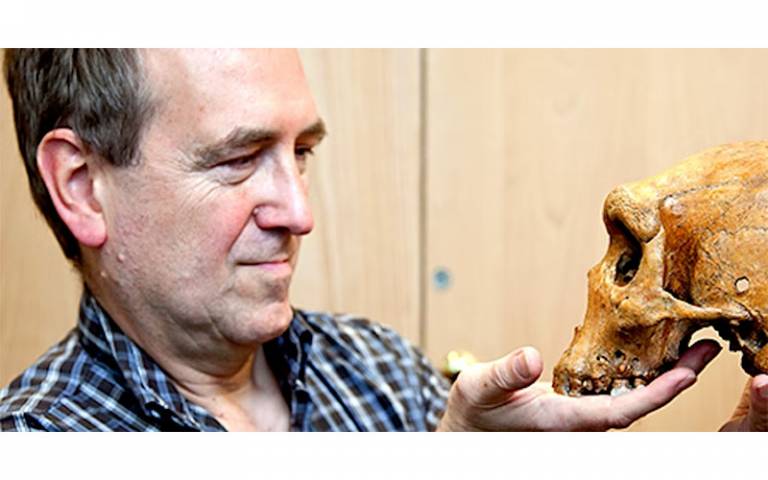Honorary Professor Christopher Stringer awarded CBE
19 January 2023
Congratulations to Christopher Stringer (Honorary Visiting Professor, UCL Institute of Archaeology) who was named in the New Year Honours List for 2023.

Christopher Stringer has been awarded a CBE for services to the understanding of human evolution. The honours system recognises people who have made achievements in public life or committed themselves to serving and helping the UK. Christopher's work has transformed scientific and public understanding of human evolution and modern human origins.
Christopher is a world-leading authority in palaeoanthropology. Since completing his undergraduate degree at UCL, he has helped shaped the study of human origins, both globally, through his development of the groundbreaking Recent African Origin model for modern humans and, closer to home, as Co-Director of the Pathways to Ancient Britain Projects.
His 2017 lecture at UCL on the last 500,000 Years of Human Evolution, explored the recent evolutionary history of the genus Homo and the origins of our own species Homo sapiens in light of recent discoveries from the human fossil record. The status of Homo heidelbergensis, early Neanderthals and their relationship to Anatomically Modern Humans is a complex one, and his lecture provided up to date thinking on this fast changing subject.
Christopher has collaborated with Simon Parfitt and Matthew Pope at UCL on several projects, especially concerning the Boxgrove and La Cotte de St Brelade sites. Simon also continues to work with him on the Pathways to Ancient Britain projects, funded by the Calleva Foundation.
Christopher, who is also Research Leader at the Natural History Museum, said:
“I'm delighted to be awarded the CBE and accept this as an honour not just for me but for all the people I've worked with on human evolution studies over the last 50 years or so, both within and outside the Natural History Museum.”
 Close
Close

